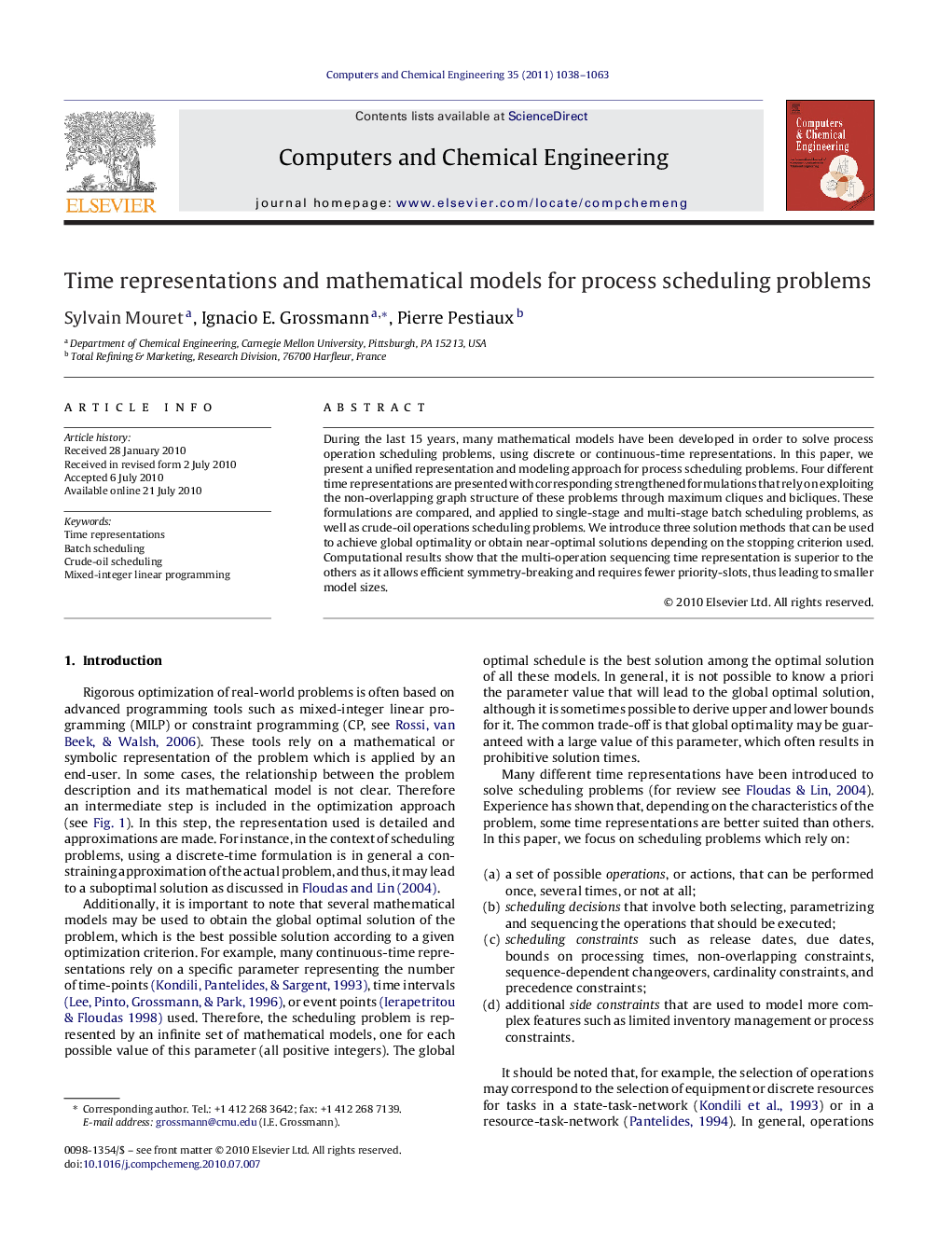| Article ID | Journal | Published Year | Pages | File Type |
|---|---|---|---|---|
| 173105 | Computers & Chemical Engineering | 2011 | 26 Pages |
During the last 15 years, many mathematical models have been developed in order to solve process operation scheduling problems, using discrete or continuous-time representations. In this paper, we present a unified representation and modeling approach for process scheduling problems. Four different time representations are presented with corresponding strengthened formulations that rely on exploiting the non-overlapping graph structure of these problems through maximum cliques and bicliques. These formulations are compared, and applied to single-stage and multi-stage batch scheduling problems, as well as crude-oil operations scheduling problems. We introduce three solution methods that can be used to achieve global optimality or obtain near-optimal solutions depending on the stopping criterion used. Computational results show that the multi-operation sequencing time representation is superior to the others as it allows efficient symmetry-breaking and requires fewer priority-slots, thus leading to smaller model sizes.
